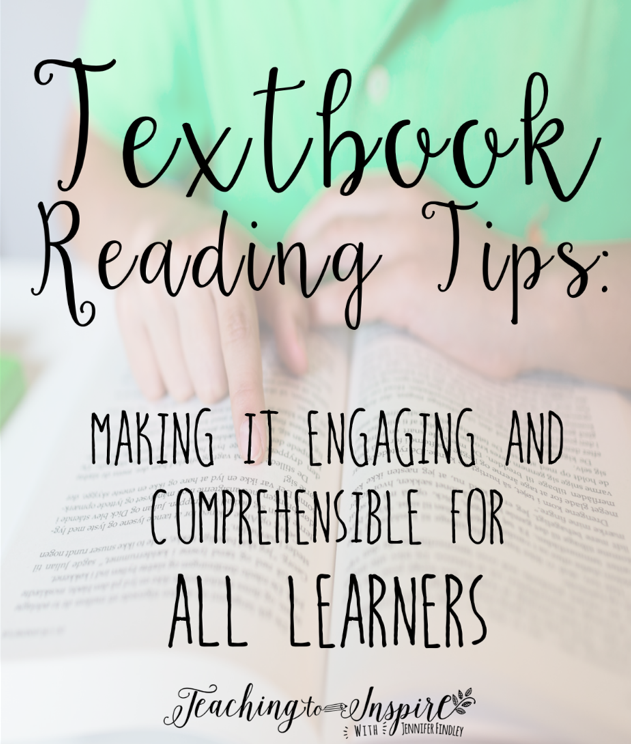Though I have never been a “textbook teacher”, I can definitely see the benefit of using a common text with the students, particularly in science and social studies. I typically use only a textbook or common text for social studies, occasionally for science, and never for ELA or math because my district does not have a mandated textbook for either of these subjects. However, for those instances when I have used a textbook, I have learned some strategies to make it more engaging and comprehensible for all my learners. These strategies are also perfect for English Language Learners and students with special needs.
1. Frontload the information that will be presented in the text before reading in a story format.
When I am about to teach a difficult concept, I usually frontload the information in a story format or even with a story similar to what we are about to study/read about. One concept that comes in mind in particular is teaching the Cold War to my fifth graders. I usually tell a similar, yet relatable story about two students disagreeing on a belief (I usually have it be something silly, like everyone has to wear pink) but never actually fighting. I tell them that smaller fights break out because of the two people’s disagreements, though. Then when we discuss the Cold War and the disagreement about Communism and the wars that fell under the Cold War “Umbrella”, I connect it back to the story we discussed in the beginning of the lesson. They are able to easily connect the two and understand this difficult, very abstract topic.
2. Before reading, set a focus with 2-3 Essential Questions.
Before reading the textbook, I typically ask my students 2-3 questions to help focus their thoughts. I use these sentence stems:
- Read to find out why/how…
- When you read, look for the reason why…
- While we are reading, see if you can find the answer to why…
This gives them a reason and focus for reading, and it keeps them actively reading the text. As we come to the answer, we stop and discuss.
3. Encourage active participation while you are reading by using a “Read the word I leave off” strategy.
I use this when I am reading a common text that all the students have access to. I will read out loud, pausing at a word for the students to read. This keeps them following along and is a bit of a game to some of them. It works, for some strange reason. I usually stop at a word at the end of a sentence and a word that is meaty, but that I know all the kids can ready easily. I even use this when I am reading directions or notes that need to go home.
4. Use a fill in the blank format for scaffolded notes after reading.
When we are finished reading the selected textbook pages, I use a “Fill in the Blank” format for the students to take notes. Here is an example:
During the Cold War, __________________ and ___________ disagreed over _____________________. This time period was named the “Cold War” because _____________________________.
After I write or display the notes on the board, we read it together and the students fill in the blanks. Then they copy down their notes. This keeps them actively engaged in the note taking process, and is a way for me to informally assess their knowledge from the lesson. If I hear crickets when we get to a blank, I know we need to spend some more time on that concept.
Do you still use a textbook or common text to teach some subjects? Do you think these strategies will work for you and your students? Let me know in the comments.









Great ideas! One thing I tried today that worked really well . ..
We were reading about the time after the American Revolution. I took directly from the text “GW was the first P” and wrote that on the board. We had just read a paragraph talking about George Washington being the first President. When we were done reading, I had several similar sentences that were cryptic with just the initials. They LOVED it! They were super excited to figure out these concepts that we were learning! I will definitely be doing this again!
That sounds so fun! I am going to have to try that out. Thanks for sharing!
Much to my dismay, I am “strongly encouraged” to use our textbook in reading although I personally do not like it. I do see the advantages of each student having the text in front of them, but I don’t care for the stories in the book. I love these ideas and will be using them in both reading and social studies for sure! Thanks!
Love this! I have been struggling with using the textbook but making it engaging as well. I have done “Read the word I leave off” as well and it works! Do you use this for most lessons? While a lot of students like to read out loud, engagement seems to be at an all time low. 🙁 I have also done group reading and filling out a “packet” with different activities like make a song for the states/capitals in this section, would you rather visit place a or b and why using evidence from your text.
Thanks so much for these great tips. I’m teaching 5th and 6th grade for a semester but I just finished high school last year…it’s a long story but needless to say, I’m not sure what I’m doing, so I really appreciate your posts and all these helpful comments!